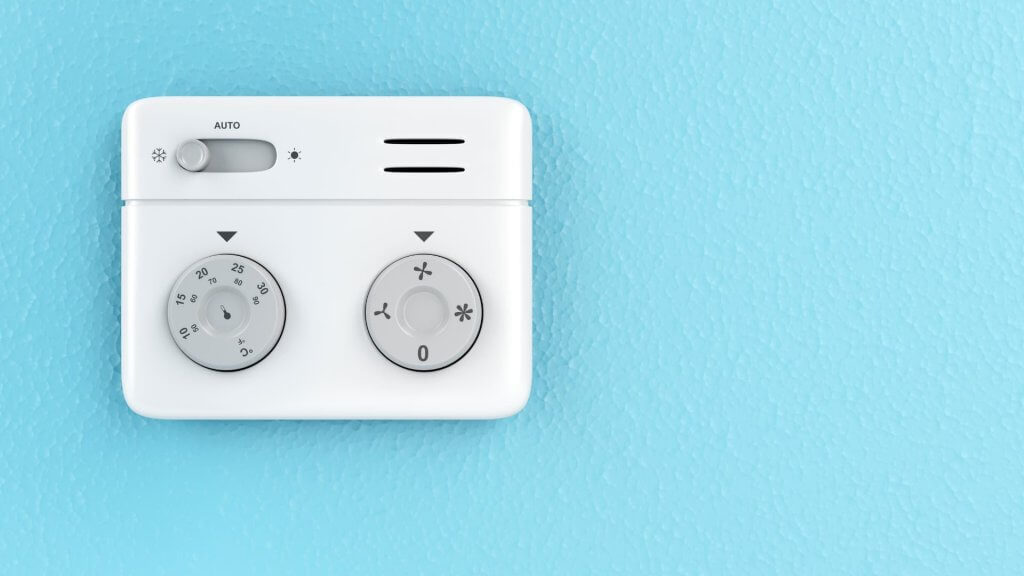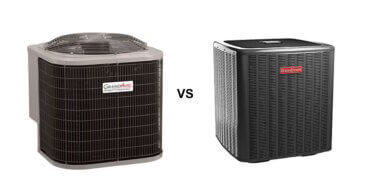Ahh the dilemma! When the summer approaches, finding an ideal AC temperature is a confusing affair. Hence the million-dollar question: what temperature should I set my air conditioner?
You should set your air conditioner to 78°F according to the US Department of Energy (source). However, this figurative glove doesn’t fit all hands. Ideal AC temperatures change according to factors such as location and season.
With that in mind, let’s take a deep dive and examine how we can determine the ideal air conditioning temperature.

What Sort Of AC Unit Do You Have?
Your baseline temperature is dependent on the type of AC you have set up at home. There are essentially two types of setups.
- Central AC, that provides cooling to the entire home or building.
- Room AC, which is dedicated to a single room.
While central cooling is becoming more and more prevalent in the US, room ACs aren’t extinct yet.
Related article: What Are The Types of Air Conditioners
But what difference does it make? Well, since room ACs are both less efficient and only dedicated to a single room, they should ideally be set at higher temperatures. Setting a room AC at 80°F will achieve a nice balance between cooling and billing.
What Sort Of Area Do You Live In?
Geographical location is a dominating factor in determining the perfect AC temperature. Texas, for example, has hot and humid summers. And that’s why setting your thermostat below 78°F in such areas is understandable.
Related article: How Long Should a Dehumidifier Run Per Day
You can also do a little experiment of your own. Here’s how it goes!
Set the temperature to an extent where you start feeling uncomfortable. Now simply go a degree or two below the uncomfortable temperature. This way you will achieve a perfect temperature that is neither too low nor too high.
Fans And ACs – The Best Combination
Fans can compensate for an approximate 4°F, as specified by the Department of Energy. Therefore, if you have room ACs set up in living spaces with fans, you might as well knock those few degrees off. By living spaces, we mean rooms that you spend most of your time in, i.e. bedrooms, lounges, and living rooms.
Even if you have central cooling with fans installed, do not hesitate to increase the temperature by 4°F (source). You could comfortably coast with a temperature of, say, 82°F when ACs are used in conjunction with ceiling fans.
Remember to test your comfort limits, since not all ceiling fans are the same. Fans with larger blades move more air, they can potentially bring a room’s temperature down by even more than 4°F.
Increase The Temperature When Not At Home
This is sort of a no-brainer, but still, we must emphasize this point. This applies especially to central cooling systems. If you’re not at home, increasing the thermostat up to 80°F is advisable. It maintains a temperature that you can more easily step down from once you get back home.
For room air conditioning, we highly recommend completely turning off the system when you step out. Since rooms are smaller, they cool down more quickly as well. Combined with the general inefficiency of room ACs, it means that you’ll be saving a lot of cash by just turning them off when not in use.
Run The AC At Low Temperature At Night
Nighttime is relatively cooler compared to when the sun is out. But your AC’s temperature should not depend on this. And there is a reason for it.
It is recommended that the thermostat reading be further decreased when one is sleeping. Bedrooms that are too hot and stuffy can lead to poor sleeping quality. And lack of sleep is not good for mental as well as physical health.
Therefore, it’s best to either keep the thermostat where it typically is, or decrease the temperature by a few degrees. Generally, the ideal temperature to enjoy a good night’s sleep varies from 60⁰F and 67⁰F, so set your ACs thermostat accordingly.
Frequently Asked Questions
1. What Temperature Should I Set My Air Conditioner To During The Winter Season?
If your thermostat has a heat setting, activate it. In incredibly frigid areas, setting the thermostat of your Air Conditioner to 70°F might actually prove useful since it would still be higher than the surrounding temperature.
Room ACs might as well be turned off for the entirety of the winter season. The ensuing electricity bill would be too much to deal with, especially if a person’s already comfortable. As far as the thermostat is concerned, increasing the reading by 10 degrees will make your home comfortable.
2. What Temperature Should I Set My AC To In °C?
You should set your AC temperature to 26°C. From there on, increase and decrease temperature as indicated above.
Celsius is a scale that’s more prevalently utilized outside of the US, in areas such as Europe. The answer to this can also be found in the upper points. The suggested 78°F, when converted, is roughly 26°C.
3. Is 72°F A Good Temperature To Set My AC Unit To?
Many people have their own definition of what a comfortable temperature is. That’s why people ask if 72°F or 74°F is a better choice to set their AC. The quick answer to this is this: define your own comfort levels.
As mentioned above, a way of testing this is by slowly increasing your AC’s reading until you get uncomfortable. Then, bring the temperature down by a degree or two. Ultimately, all electrical billing aside, an AC’s purpose is to make you comfortable in your home. If that purpose isn’t being achieved, then what’s the point?
4. What Temperature Should I Set My Air Conditioner To In The Summer Season?
Most of our tips are written with the summer season in mind. The US Department of Energy cites 78°F as the ideal indoor temperature in the summer season. However, this rule is not set in stone.
Therefore, the temperature can be adjusted according to the surrounding climate, the presence or absence of ceiling fans, and whether or not you’re at home.
Related article: How To Save Money On Air Conditioning – 12 Energy-Saving Tips





Leave a Comment